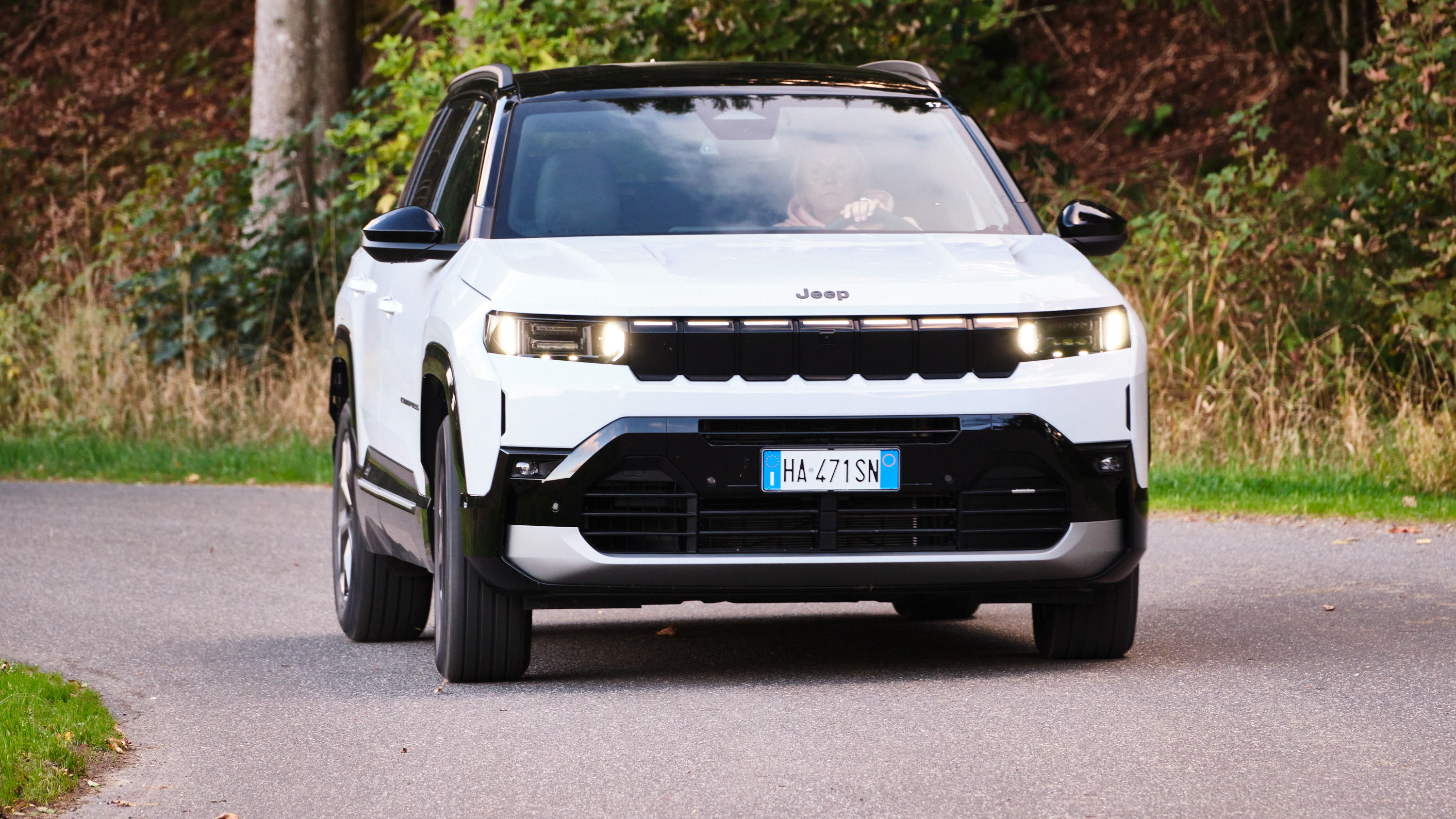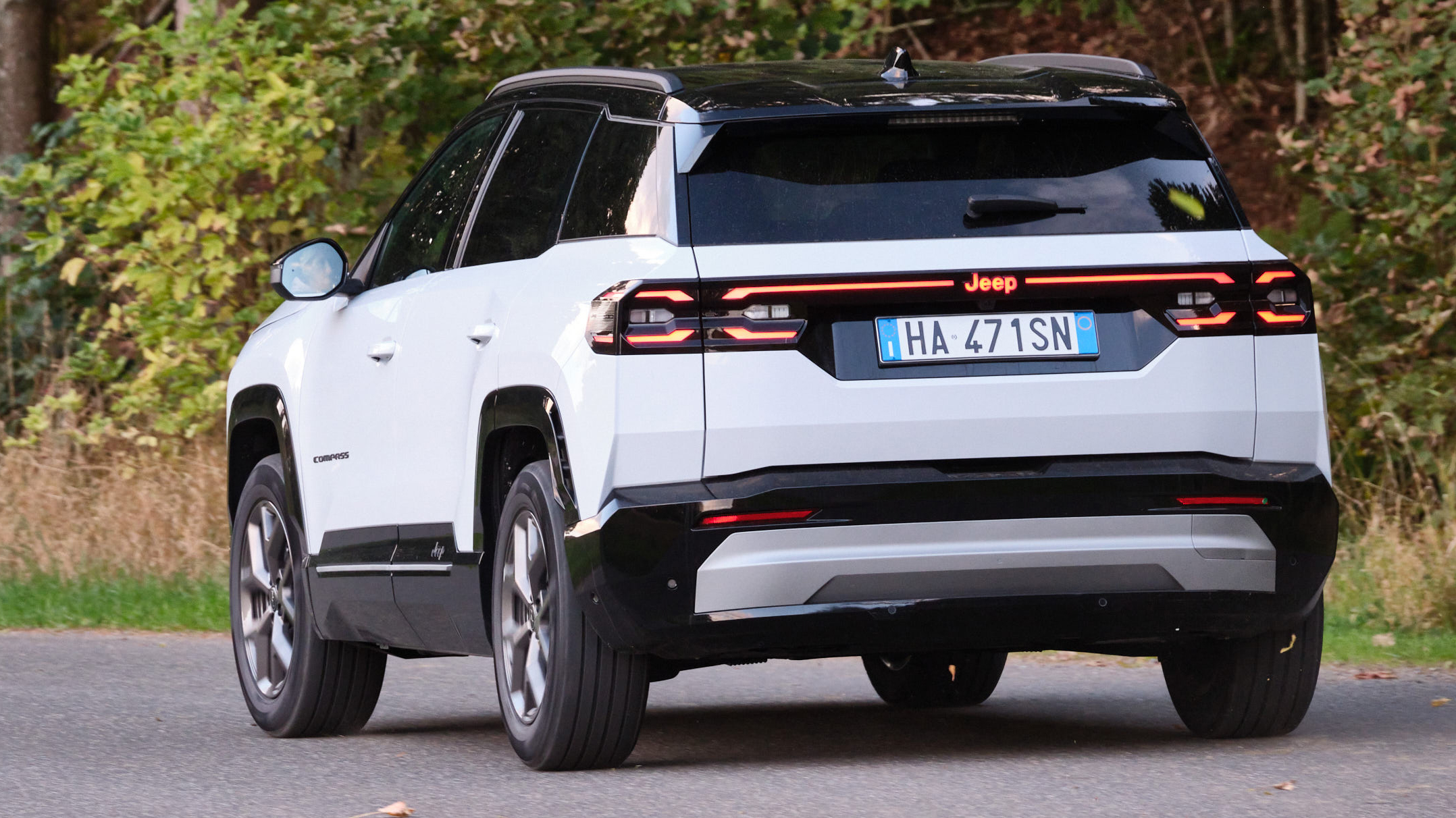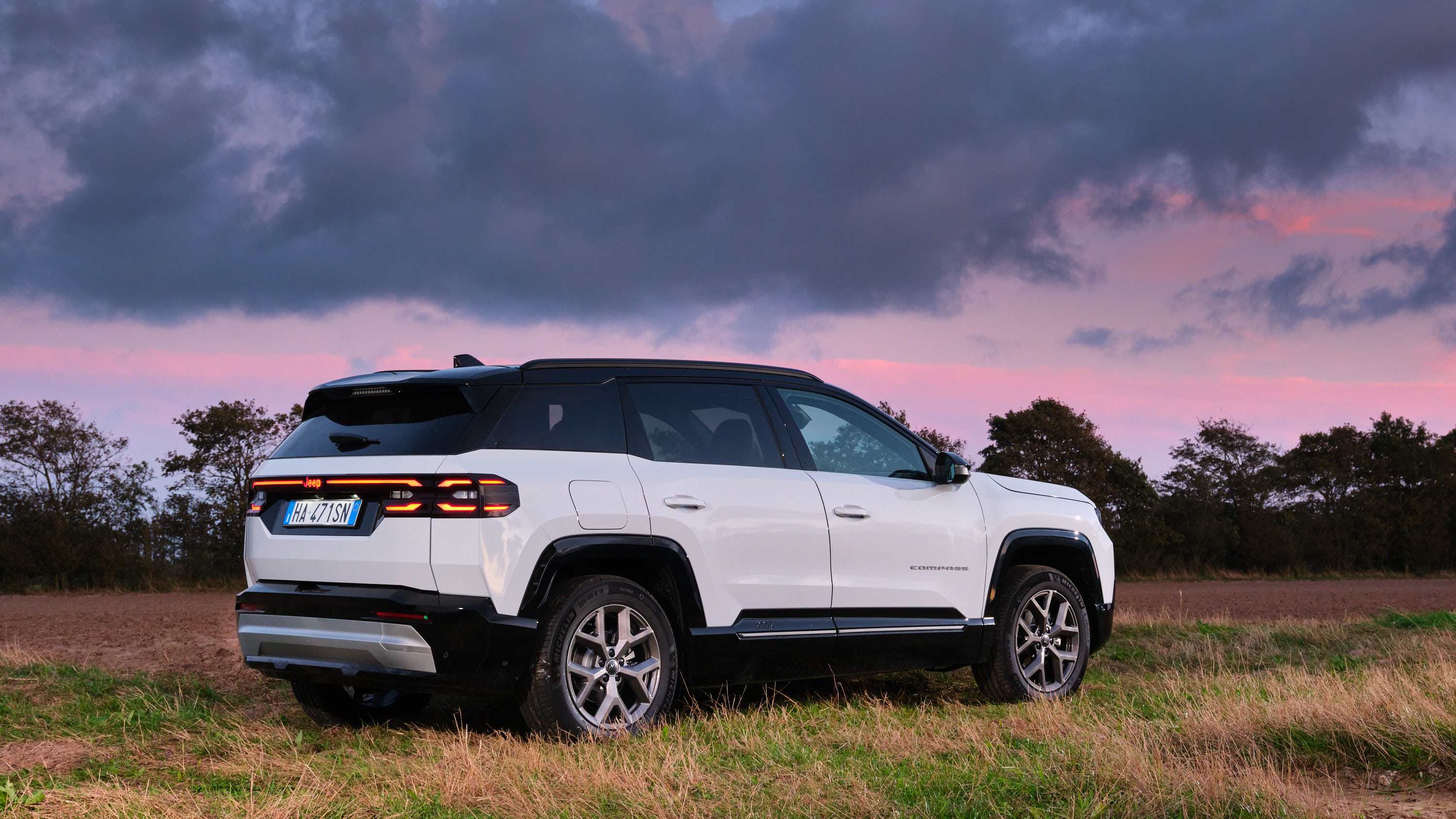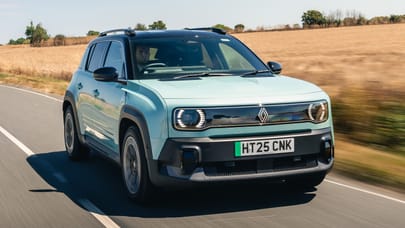
Good stuff
Easy driving, roomy, cabin is practical and has good ergonomics
Bad stuff
Four-wheel drivers – the only real Jeep-y ones – not yet available
Overview
What is it?
Funny thing about the Jeep Compass. It's just the type and size of vehicle other manufacturers sell by the shed load: family crossover, priced in the mid-30s. Yet it met a wave of public indifference. Jeep's smaller vehicles, the Avenger and Renegade, are more widely seen. Its bigger Grand Cherokee is better known. The family's mad granddad, the Wrangler, is a car everyone admires. Even if very few would tolerate it at length.
There have actually been two generations of Compass before this, but you've probably forgotten. Which shows what it's up against. We're here to see if this all-new third generation deserves to raise its profile among a sea of rivals.
What rivals would they be?
How long have you got? Huge sellers including the Nissan Qashqai, Kia Sportage, Volkswagen Tiguan, Toyota RAV4, Hyundai Tucson, Ford Kuga, Vauxhall Grandland, Subaru Forester, Honda ZR-V, plus new brands muscling into the UK including the BYD Seal U and Jaecoo 7.
The Jeep is also available as a long-range battery electric version, and that goes up against the electric Grandland, Skoda Enyaq, Kia EV5, Ford Explorer, Toyota bZ4x and Subaru Solterra.
But everything's related to everything these days, eh?
Good point, well made. Jeep is part of the Stellantis enormo-corp. So the Compass is a sibling under the skin to the said Grandland, plus the Peugeot 3008 and 5008, DS No8 and new Citroen C5 Aircross. There will also be a DS 7 successor, which you've guessed will likely be called DS No7. The Compass is made for Europe in Melfi, southern Italy.
But if you poke around these photos you'll see Jeep designers have dug their heels in and kept these genes pretty well hidden. Probably the most conspicuous visible shared parts are the column stalks, handbrake button and window switch cluster. Not much. Under the skin, though, it's a different story.
How so?
The structure, suspension and powertrains are very well known across those other brands. But hey, they don't do a bad job at all, so let's not snipe.
The car we drove is the one likely to hit the spot with private buyers. It has a 143bhp 48V mild-hybrid setup driving the front wheels. The petrol engine is a 1.2-litre turbo three-cylinder feeding a six-speed DCT auto that also houses the motor. It's not fast, even unloaded: 0-62mph is on the languid side of 10 seconds.
If you tow anything heavy or have it as a company car you'll likely want the plug-in hybrid with electric rear axle drive. But that's launched later, and we have few details now.
Finally, there are full electrics. Available now is a single-motor with a range of 310 miles from a 74kWh battery. A bigger-battery twin-motor one does 403 miles WLTP. It will doubtless be splendid for climbing slippery slopes because motors work better with traction control than engines do. Although those range numbers are considerably down on its most aerodynamic relation with the same batteries, the DS No8. That's despite Jeep's claim it spent a great deal of effort on the Compass's aero. In the end, a boxy SUV is a boxy SUV.
How does it drive?
The little petrol triple is game enough, and the mild-hybrid system integrates well. Cornering is tidy too, and the body movements well controlled. Light steering makes it feel nimble in the suburbs. More details in the driving section of this review.
How is it as a family crossover?
Backseat room is strong, helped by a flat floor because there's no need for a prop shaft to the rear. The floor is a little higher in the electric version than the combustion, but the foot space it robs is no biggie. Good boot, too.
Up front the dash and controls look chunky and distinctive, so adults and kids will think they're riding in an adventure vehicle.
It doesn't sound like a real adventure vehicle, though?
No, that's the thing. Unlike the designers, the engineers have done very little to distinguish it from the related Citroen. We asked the project chief what they'd actually done. The ride is a little higher, for better ground clearance. But just a bit, in the case of the FWD versions. The suspension arms aren't any longer or stronger, for instance. All he said was it's better sealed for deeper water fording, which is up to 470mm. Great… more expensive grommets.
At least the 4WD ones are higher again and get more impressive approach and departure angles for off-road action.
What's the verdict?
Jeep's brand image will probably give the Compass a bit of a leg-up. Who wouldn't want a vehicle that stands for freedom? And looks like it?
So it has image on its side. Plus the stuff a family needs. Its roomy cabin has an easy-to-use interface, good comfort, and the driver gets easy-going dynamics with sensible economy or electric range. Most people will find a powertrain to suit. It's well targeted at the heart of the market.
But, at least in the case of the FWD versions that launch first, this relentless targeting at the rivals means you end up with something desperately short of distinct character.
If you expect a Jeep to feel rugged and Wrangler-ish, the Compass will disappoint you. Despite the off-roadery visual touches inside and out, Jeep has made it drive like a good 'normal' car. A Peugeot 3008, to pick a not-random example. Which would probably have the khaki-painted Willys MB shuddering in horror.









